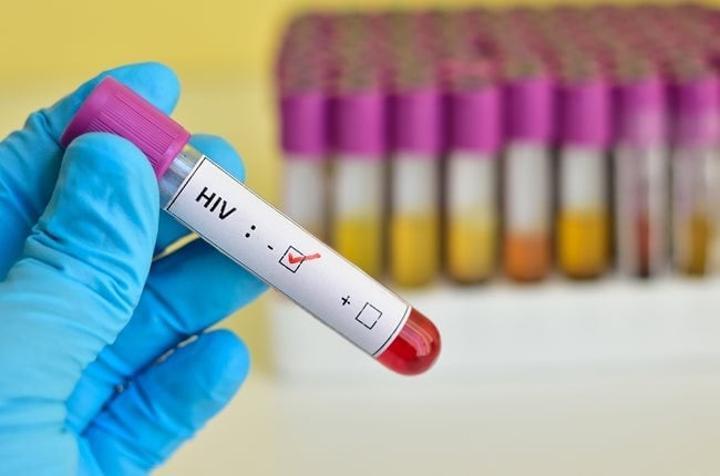Anne Githuku-Shongwe and Eva Kiwango
Africa-Press – South-Africa. While commendable progress has been made in reducing new HIV infections and AIDS-related deaths, the decline in incidence varies significantly across countries and populations, writes Anne Githuku-Shongwe andEva Kiwango.
The path to end AIDS exists. The latest UNAIDS Global AIDS Update Report shows that the path to ending AIDS is not just a concept or idea but a reality. It is a political and financial choice, and the countries and leaders who are already following the path are achieving extraordinary results.
Encouragingly, Botswana, Eswatini, Rwanda, the United Republic of Tanzania and Zimbabwe have all met the UNAIDS “95-95-95” targets. It refers to 95% of the people who are living with HIV who know their HIV status; 95% of the people who know that they are living with HIV are on lifesaving antiretroviral treatment and 95% of people who are on treatment being virally suppressed. South Africa’s treatment cascade is currently at 94-77-92 for the total population serviced through the public and private sector, according to the National Department of Health.
Ongoing inequalities
Eastern and southern Africa, home to 20.8 million individuals living with HIV, remain the regions most profoundly affected by this epidemic, but financial investments have helped speed up the progress towards ending AIDS.
In 2022, US$ 9.8 billion was allocated to HIV response in the region, with Botswana, Kenya and South Africa receiving the most. South Africa’s HIV response is anchored in strong political leadership, with the country investing 69% of domestic resources in its HIV response.
While commendable progress has been made in reducing new HIV infections and AIDS-related deaths, the decline in incidence varies significantly across countries and populations. Unfortunately, the overall decrease in HIV rates is not yet occurring at a pace sufficient to attain the 2025 targets.
Ongoing social and economic inequalities within countries and between them are prolonging pandemics and exacerbating their impact on the poor and the most vulnerable. Adolescent girls and young women, children and key populations, especially, are the most affected.
Adolescent girls and young women aged 15–24 years are at inordinate risk of HIV infection. Many adolescent girls and young girls lack sufficient decision-making power about their sexual relations, contraceptive use and health care. Adolescent girls and young women make up 11% of South Africa’s adult population, yet they acquired almost a third of all new HIV infections in the country last year—43 300 of a total of 160 000 new infections.
Creating safe societies for young women and girls is vital in protecting their health. Empowering them with knowledge, agency, and access to comprehensive sexual and reproductive health services is crucial in curbing HIV. Programmes must address gender inequalities and economic vulnerabilities, prevent violence, provide quality education, healthcare and food security— which increases their ability to adhere to HIV treatment. By empowering them with economic skills, entrepreneurship training, and access to resources, we can create pathways for economic independence and reduce their vulnerability to HIV.
Equal access
At UNAIDS, we have seen the value of multi-level collaboration to address the multiple needs of adolescent girls and young women. ‘Education Plus’ is one such collaboration.
It is imperative that we prioritise investments such as the Education Plus Initiative, which aims to accelerate efforts to prevent HIV, violence, and teenage pregnancy by providing young women and adolescent girls with equal access to quality secondary education and key education and health services.
We also need to secure the well-being of our children to combat AIDS. Even though AIDS-related deaths among children (0-14 years) declined by 64% between 2010–2022, the epidemic still claimed the lives of an estimated 84 000 children in 2022. In South Africa, only 61% of children are receiving ART compared with 81% of adult women and 70% of adult men. To achieve the 95-95-95 targets for children, South Africa must put an estimated 95,000 children (0-14 years) on treatment, the National Department of Health states.
Consistent adherence to treatment can truly eliminate mother-to-child transmission. Botswana and Malawi have significantly reduced their vertical HIV transmission (direct transmission from mother to child in utero, during delivery or through breastfeeding) rates by 83% and 74%, respectively, and these successes are a testament to the importance of fostering strong partnerships with other health programmes, such as child immunisation and sexual and reproductive health services.
By leveraging these collaborations and actively engaging with communities, it becomes possible to ensure universal screening of all pregnant women for HIV, as well as treating the children of women living with HIV.
The route map set out in UNAIDS’ new report shows that it is possible to end AIDS in this decade. It takes collaboration—South and North, government and communities, UN and member states together—bold leadership and informed action.
– Anne Githuku-Shongwe is the UNAIDS Regional Support Team for Eastern and Southern Africa Director and Eva Kiwango is the Country Director of UNAIDS South Africa.
For More News And Analysis About South-Africa Follow Africa-Press






